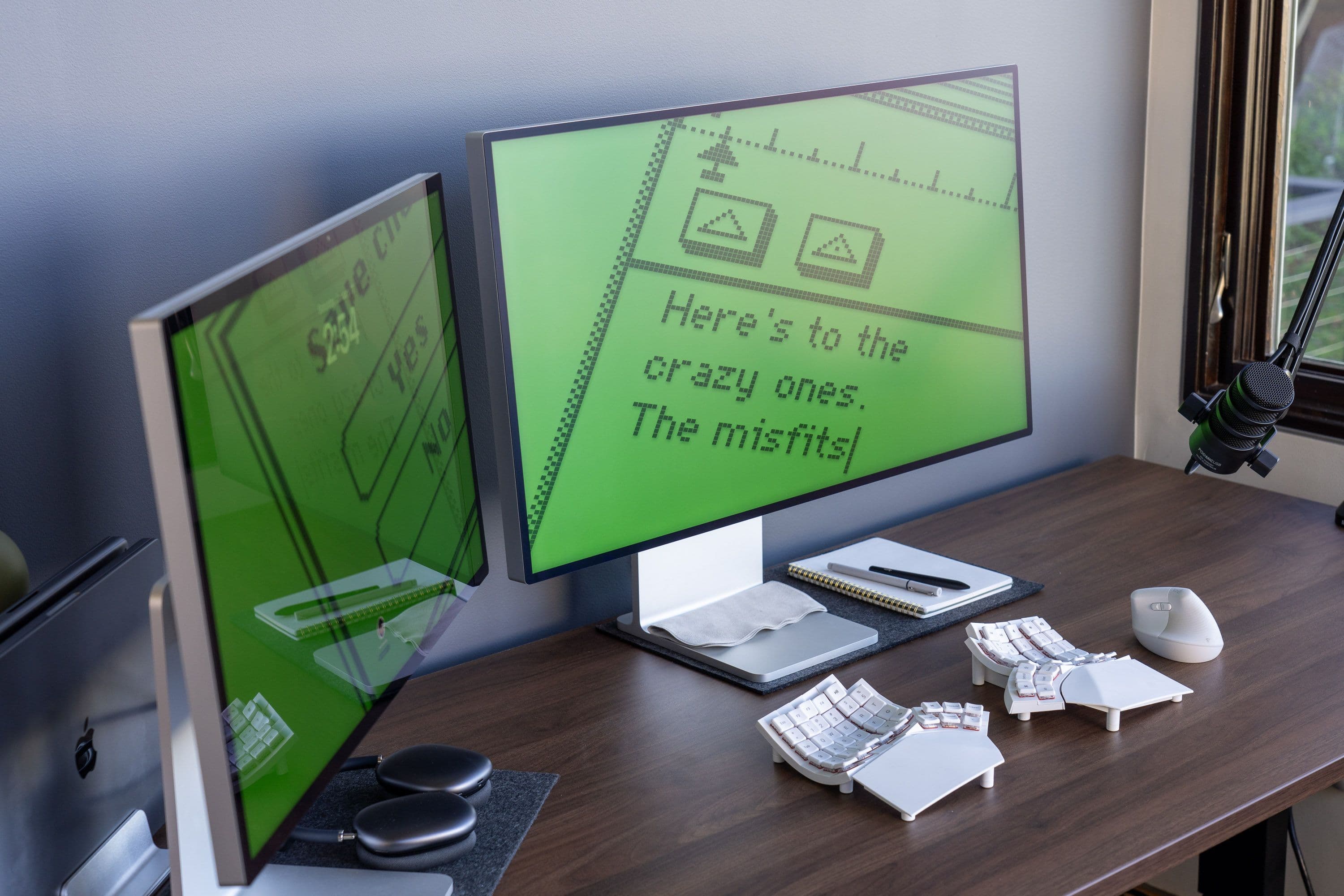
My workspace in SF
For several years I relied upon my Dell UP2718Q 4K display; originally described in my 2018 article, Building a Lightroom PC. At the time it was a great 27" monitor with both Mac and PC support, 4K resolution and impressive color accuracy. It served me well.
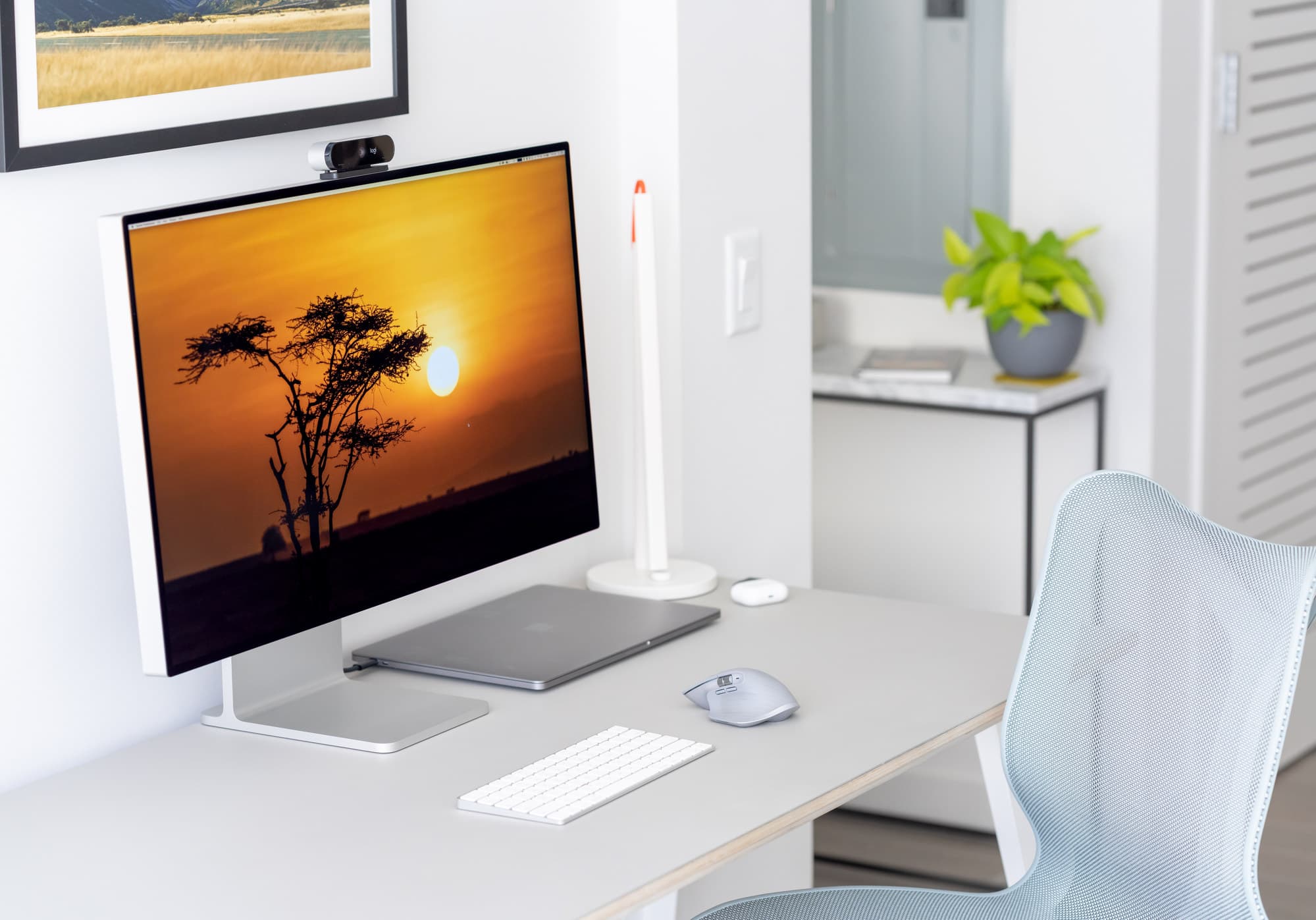
My previous workspace in NYC
I had always kept my eye on the new computer displays ever since then but the options for non-gaming displays continued to feel stagnant. There weren't any new traditional 5K panels, just lots of ultrawide 5K displays being introduced. The LG 5K remained the only other good contender if your machine could run 5K over Thunderbolt 3 and you didn't mind the ridiculously glossy, reflective display and dull aesthetics.
Then the 32-inch Retina 6K Apple Pro Display XDR was announced. I could rattle off the long list of specs but I'd prefer to just keep it simple and only mention the ones really important to me: 6K resolution, nano-texture matte glass, 1000/1600 nits with full P3 wide color gamut, as well as the stunning design and simplicity of it with just one cable to charge and run from my 16" MacBook Pro.
The problem with running 4K on my prior 27-inch display was that I always had to be running a scaled resolution to be able to see things large enough to interact with. Running at the native 3840x2160 was possible but everything was impossibly tiny. With the XDR, there's more resolution and a physically larger display, so this is less of a problem.
Of course, the Retina 2x mode is only 3008x1692 on the XDR, so when I find myself wanting more screen real estate and am okay with sacrificing some sharpness, I use SwitchResX to move to a 3840x2160 scaled resolution. That was all fine and great while I had an Intel-based Mac. Unfortunately, it does not seem possible to use a custom scaled resolution like that with my new M1 Max-based MacBook Pro. I'm back to running at the native 3008x1692 resolution.
First impressions
-
Size: After the typical lovely unboxing with Apple's insane attention to detail, I found myself looking at a huge XDR display on my desk. I had never been in front of such a large computer monitor. It honestly took about a week to get used to the size. It felt like I more actively had to move my neck around to look at the whole screen.
-
Simplicity: Setup was a breeze and I can't stress how refreshing it was to take down my older monitor and all of its required cables. The XDR just needs power and one single Thunderbolt 3 cable. The integrated USB-C hub in the XDR takes care of accessories I need like my webcam, security key and Logitech USB dongle for mice.
-
Nano-texture glass: My Dell display was matte but I still couldn't use it in my living room when I had a light on behind me. The glare was too annoying for doing any real work. That's not an issue at all with the nano-texture Pro Display XDR. I'm incredibly impressed with its performance in a variety of lighting conditions.
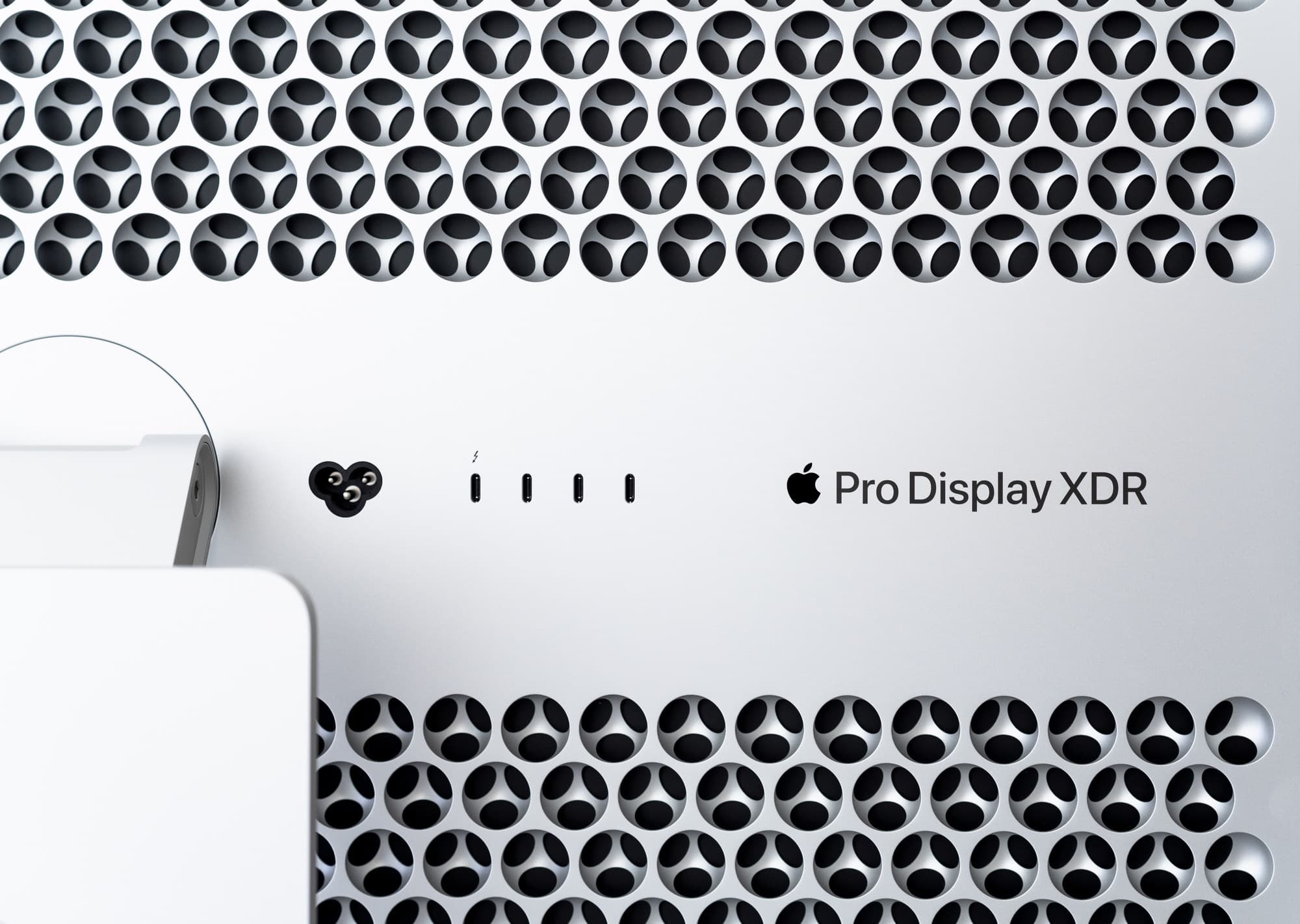
There were, however, some concerns as well. First off, I did notice a kind of vignetting with the display and have heard this directly from a few other XDR owners. Not a traditional vignetting where the corners are darker, but more so stemming from my field of view. Looking at parts of the screen that are not directly in front of my field of view felt slightly darker but appear normal as I move my head closer to them or moved further back.
Another significant concern is with the nano-texture glass. It requires a special cleaning cloth and cannot be cleaned by any other means. I'm just very worried that one day I will accidentally splash coffee on it, sneeze on it or something else and it won't be easy to clean and will leave permanent splotches on the screen. The manual says nothing about ever using any liquid to clean the display so I'm not sure how I might safely remove any liquids that splash on it. So for now, I remain 100% paranoid about using liquids near the XDR.
That being said, the special cleaning cloth is very effective. I had one fingerprint on the side from adjusting the position of the display that I was worried it wouldn't be able to clean (fearing my finger oils maybe seeped in) and the cloth instantly cleaned it with one light swipe.
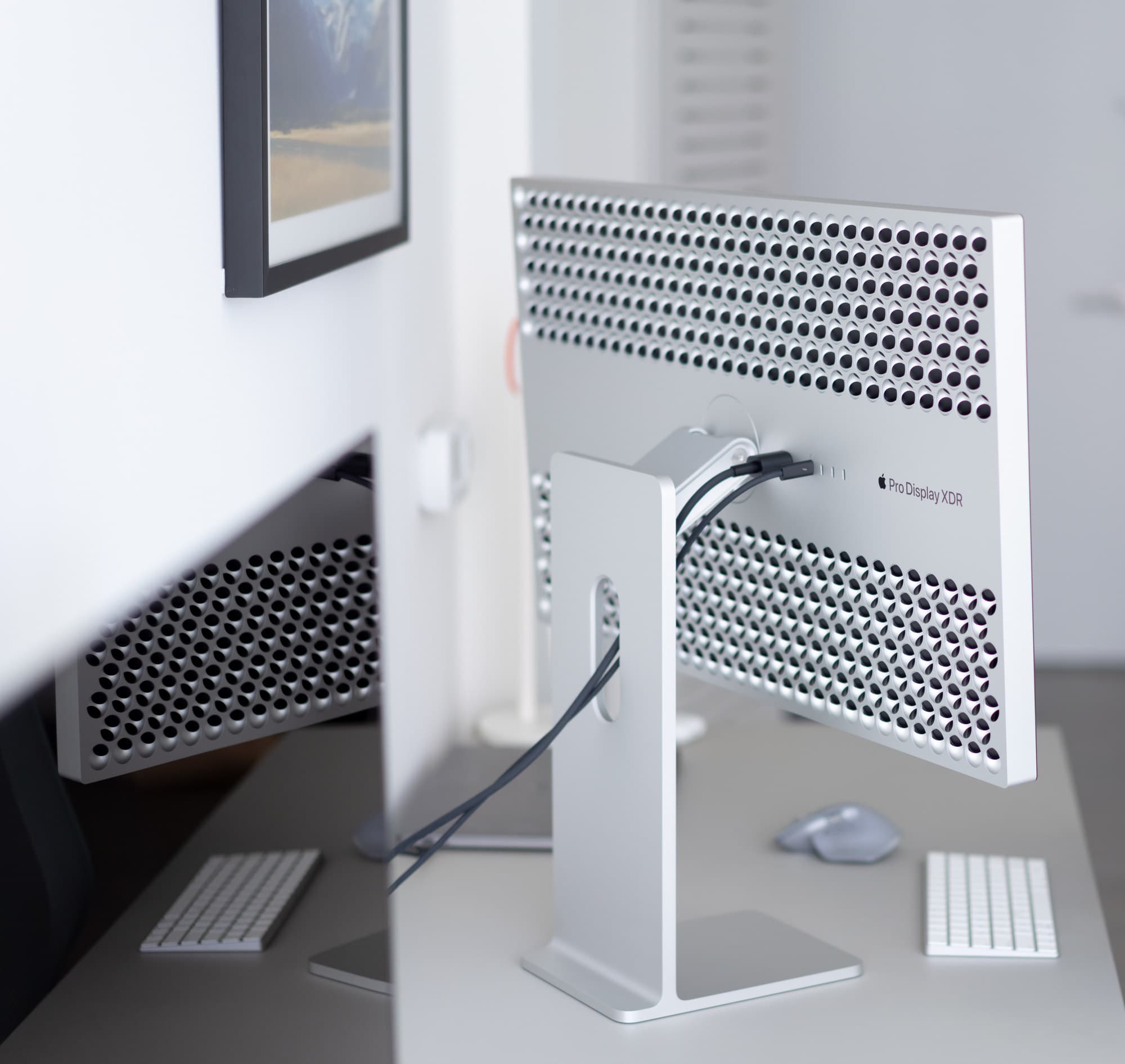
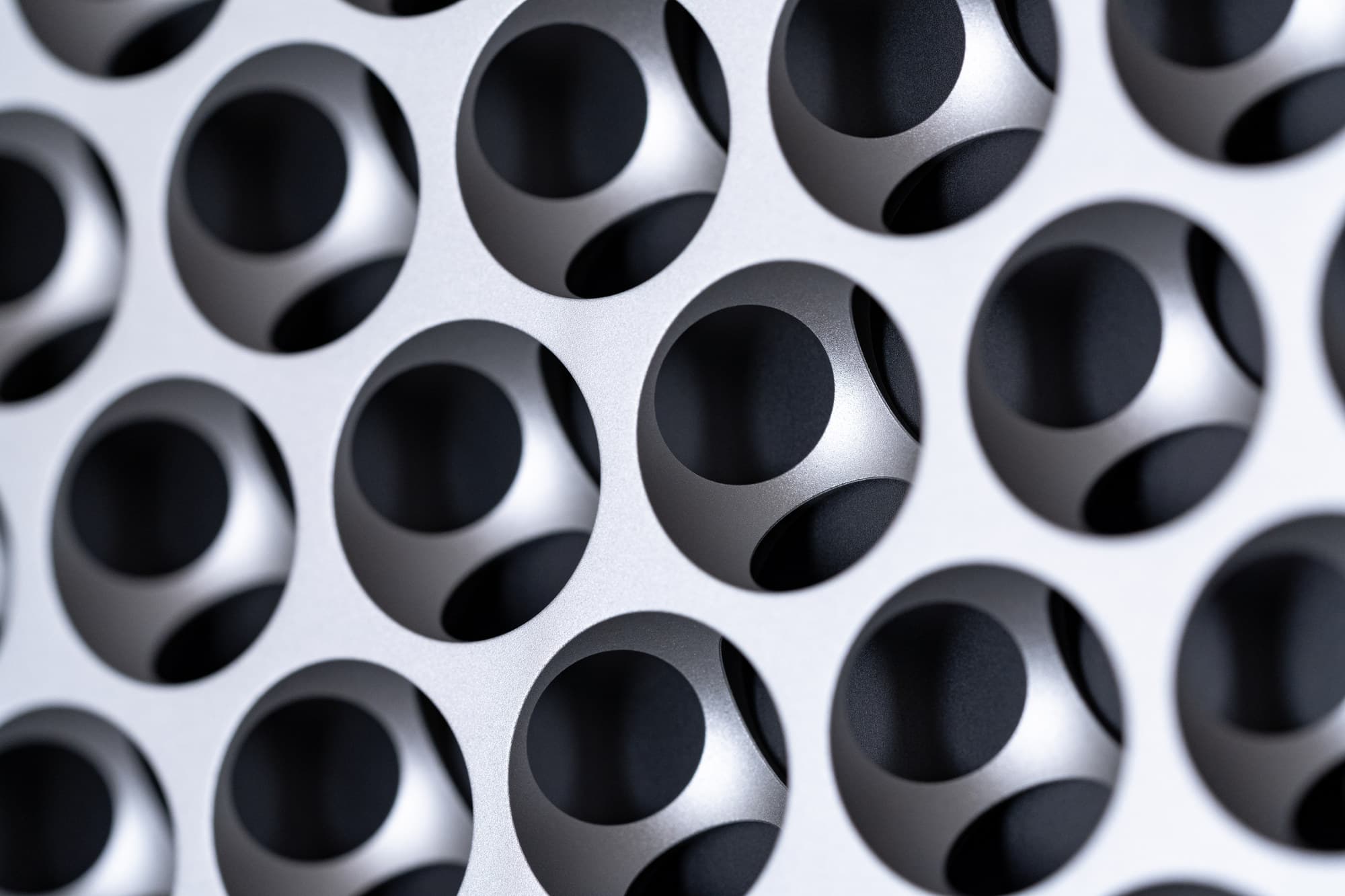
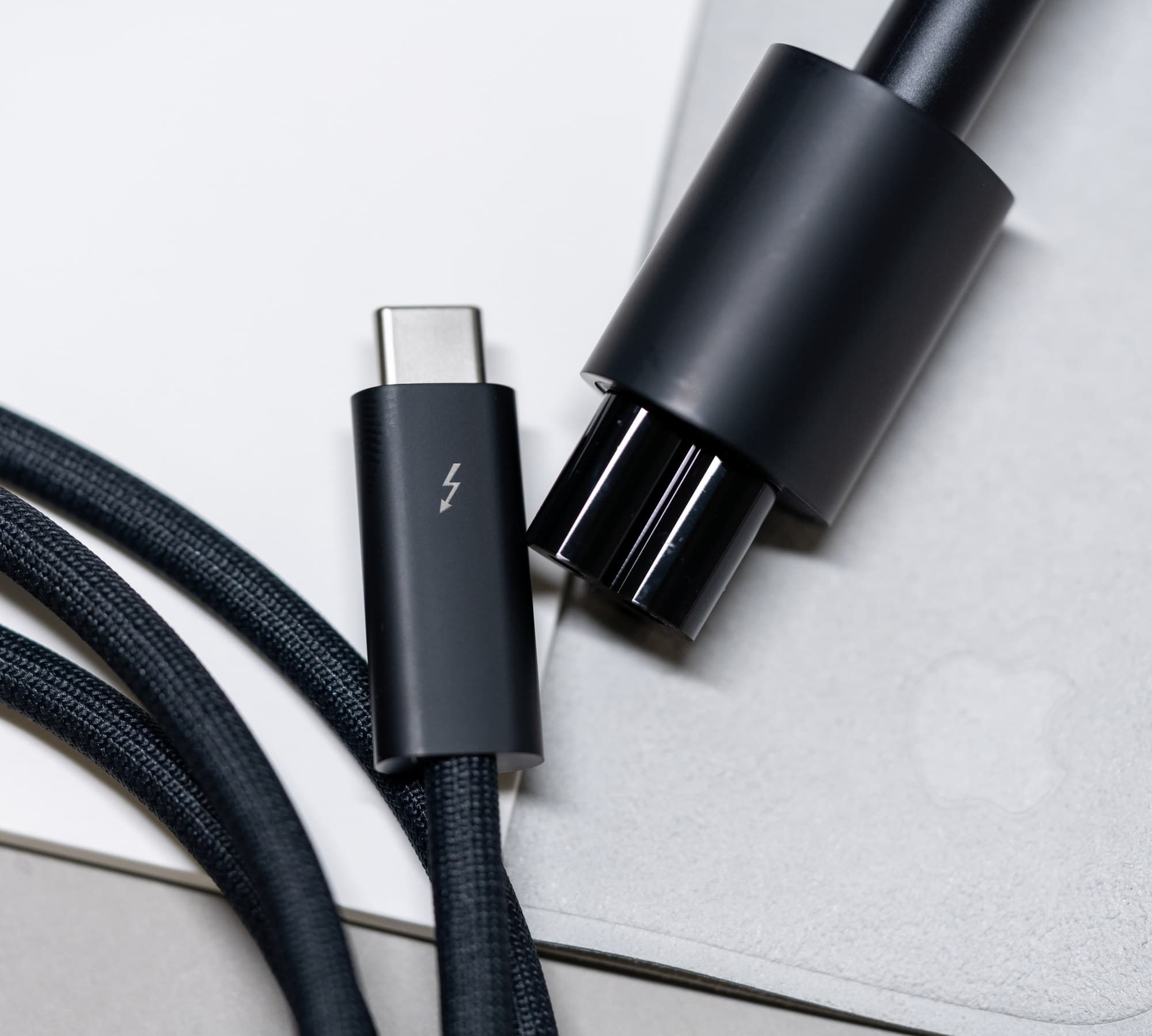
Overall, I'm thoroughly impressed with this display and it's exactly what I was looking for. Is it overkill for someone that uses it for hobbyist photography and design and development needs? Definitely. I'm not putting it to its full potential as I rarely have a use for things like its reference modes, though other functionality like True Tone is incredibly convenient and easy on the eyes when not doing any color-sensitive work.
It's not possible to talk about the Pro Display XDR without bringing up the price. Yes, it's ridiculously expensive when comparing it to what an all-around good computer monitor usually costs: $800-1200. With the nano-texture option, the stand, Apple Care (with a display like this, you absolutely want it) and tax, the XDR weighs in at just over $8,150 USD.
I was able to purchase it for considerably less with the help of an employee friend discount as well as receiving 6% back from using my Apple Card during a holiday promo. I think it's worth it—especially for something I will hopefully be using for the better part of a decade—but that's understandably a very personal decision. I also, admittedly, place a lot of value in its physical aesthetics.
I also needed to get a webcam since the XDR, meant for professionals that would likely be mounting several of these together in a studio, does not have one. I had an old Logitech webcam for many years and used that for a bit but it wasn't great: the mounting bracket was too deep for the XDR's thin bezel and would touch and hide part of the screen. I got the 4K Logi Brio made for the XDR with a magnetic base.











